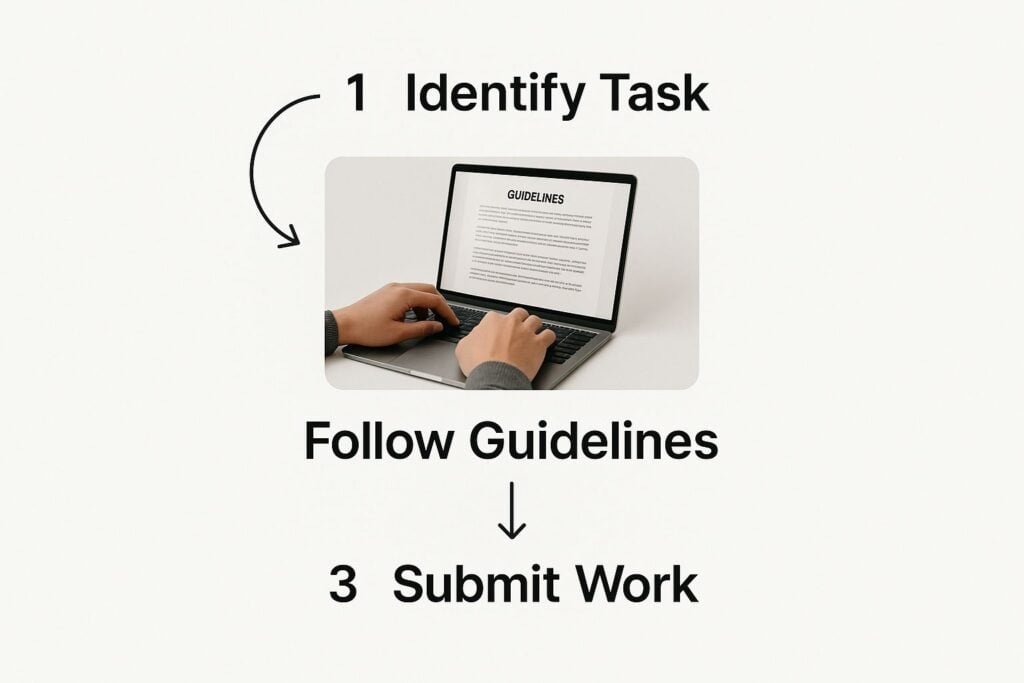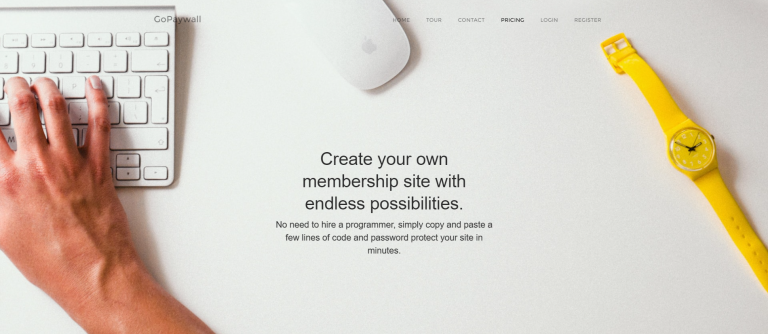Crafting Rules of the Community That Actually Work

Setting up the rules of the community is probably the most important thing you can do to build a safe, engaging, and long-lasting online space. These guidelines are the foundation of your group’s culture, clearly spelling out how members should interact with each other and your content.
Why Strong Community Rules Are Essential
When I first started building online communities, I thought rules were just about stopping bad behavior. I figured if people were nice, we wouldn’t need a long list of “don’ts.” I learned pretty quickly just how wrong I was.
It turns out that vague or nonexistent rules don’t create freedom. They create chaos.
A solid set of community rules does way more than just prevent spam or arguments. It helps you proactively build the exact kind of environment you want. Clear guidelines actually empower your members by showing them exactly how to participate and contribute in a positive way. When people know what’s expected, they feel much more confident jumping into conversations.
This proactive approach will also save you an incredible amount of time and stress as a moderator. Instead of making tough judgment calls on every little issue, you have a clear framework to fall back on. That consistency is absolutely key to building trust with your members.
Create a Safe and Predictable Space
People thrive in environments where they feel safe and the boundaries are clear. This sense of security is vital for any community, whether it’s a neighborhood block or a private Slack channel.
Think about it in the real world. An Ipsos survey found that 31% of people believe crime is increasing in their local area, which points to a fundamental human need for security and predictable rules. When your members know there are real consequences for harassment or disrespect, they feel protected. You can discover more insights from this global attitudes survey to see how these principles apply everywhere.
That feeling of safety is what turns quiet lurkers into your most active participants.
A well-defined set of rules is your community’s constitution. It protects members, defines the culture, and gives moderators the confidence to act decisively and fairly.
Protect Your Brand and Purpose
Your community is a direct reflection of your brand. If your group is constantly filled with off-topic posts, aggressive self-promotion, or heated arguments, that’s how people will perceive your entire business.
The rules you set are your first line of defense in keeping the group focused and valuable. They ensure the space serves its intended purpose for everyone involved.
For example, a simple rule against unsolicited sales pitches protects members from getting spammed and keeps the focus on genuine connection and learning. This preserves the integrity of your community and ensures it remains a place people genuinely want to be a part of.
Start with Your Community’s Core Values

Before you write a single rule, we need to take a step back. I’ve seen so many community managers jump straight into making lists of what people can and cannot do, and it almost always backfires. Why? Because rules without a solid foundation feel arbitrary and controlling.
The best rules of the community don’t just appear out of thin air. They grow directly from your community’s core values. Your values are the “why” behind every single guideline you’ll eventually create.
Think of it like building a house. You wouldn’t start putting up walls without a blueprint, would you? Your values are that blueprint. They define the entire purpose and feeling of the space you’re trying to create.
Defining Your Community’s Vibe
So, how do you nail down your core values? It starts by asking some foundational questions about the kind of atmosphere you want to cultivate.
- What is the primary purpose of this community? Is it for professional networking, learning a new skill, getting emotional support, or for fun.
- What behaviors do you want to encourage? Think about things like collaboration, constructive feedback, curiosity, or maybe even vulnerability.
- What kind of interactions would make you proud? Picture your ideal member conversation. What does it look and sound like?
Answering these questions gives you a compass. For example, a community for software developers might value precision and constructive criticism. On the other hand, a support group for new parents would probably prioritize empathy and non-judgment. These two groups need wildly different rules because their core values are worlds apart.
Your values are not just fluffy words. They are the active principles that guide member behavior and your own moderation decisions. When a tough situation comes up, you can always go back to your values to find the right answer.
Once you have a few core values written down, you can start translating them into practical principles. This is the bridge between your big-picture vision and the specific rules people will follow every day. It’s where abstract ideas become concrete actions.
From Abstract Values to Actionable Principles
Let’s see how this works with a real-world example. Imagine you’ve decided one of your core values is “Collaborative Learning.” That’s a great start, but what does it actually mean in practice?
Here’s how you can break it down into actionable principles that will later become your rules:
- Value: Collaborative Learning
- Principle 1: We believe everyone has something to teach and something to learn. This encourages members to be open to sharing their knowledge freely and without ego.
- Principle 2: We get better by helping each other. This pushes members to answer questions and offer helpful feedback instead of just posting their own problems.
- Principle 3: We value asking thoughtful questions. This helps prevent low-effort posts and encourages people to do a little research first, respecting everyone’s time.
See the difference? We went from a single concept to three clear statements that describe what successful participation looks like. These principles make it so much easier to write the actual rules later on.
You’re no longer just making things up. You’re simply clarifying the behaviors that support the culture you’ve already defined. This is the secret to creating rules that feel helpful, not restrictive.
How to Write Clear and Actionable Rules
Alright, let’s get down to actually writing these rules. This is where your community’s core values transform into clear, actionable guidelines that everyone can follow.
Forget the stiff corporate language or dense legal jargon. The goal here is to create something that feels less like a rulebook and more like a helpful welcome guide for a new friend.
We want to use positive, encouraging language that shows people how to succeed and thrive in your community. Think of your rules as guardrails for a great experience, not a list of potential punishments. This approach naturally invites participation instead of scaring people off before they even get started.
This simple flow chart breaks down how to turn your big-picture values into clear, written guidelines.

As you can see, the process always starts with your core values and ends with rules that are easy for everyone to understand and follow.
Use Positive and Clear Language
The way you word your rules matters a lot. Instead of focusing on what members can’t do, frame your guidelines around what they can and should do to get the most out of the community.
Here’s a quick comparison to show you what I mean:
- Negative: “Don’t spam the group with links to your blog.”
- Positive: “Share your work in the dedicated ‘Promotions’ thread on Fridays. We’d love to see what you’re creating!”
See the difference? The positive version guides behavior constructively, which is far more effective than a laundry list of “don’ts” that can make members feel like they’re being policed. The positive version also makes them feel welcome to share.
A focus on positive language makes your rules feel like a shared agreement for a better community, rather than a top-down mandate. It helps build a culture of mutual respect and cooperation from day one.
Framing rules positively is a smart move for online spaces. Research shows that just having rules doesn’t automatically build trust or improve outcomes. For example, a major study on community policing found that while rules helped officers stick to policy, it didn’t really lower crime or boost citizen trust. You can read the full research on this rule-based approach to see why clarity and positive framing are so critical.
To help you put this into practice, here’s a look at how to reframe some common community rules from negative to positive.
Positive vs Negative Rule Framing Examples
| Negative Framing (What to Avoid) | Positive Framing (What to Use) | Why It Works Better |
|---|---|---|
| “No unsolicited DMs to members.” | “Please respect members’ privacy. Ask for permission in a public channel before sending a direct message.” | It explains the desired behavior (respecting privacy) and provides a clear action (ask first), rather than just being a prohibition. |
| “Don’t post off-topic content.” | “Keep discussions focused on [Your Community’s Topic]. We have a dedicated #off-topic channel for everything else!” | It directs members to the correct place for their content, acknowledging their desire to connect on other subjects while keeping the main channels focused. |
| “No self-promotion or affiliate links.” | “You can share your projects and offers in our ‘Share Your Wins’ thread on the first Friday of every month.” | It provides a specific, approved outlet for self-promotion, which prevents spam while still giving members a chance to share their work. |
| “Don’t be a jerk.” | “Engage in discussions with kindness and respect, even when you disagree. Assume good intent from others.” | It’s specific and actionable. “Don’t be a jerk” is subjective, while “be kind and respectful” sets a clear behavioral standard. |
Shifting your language from telling people what not to do to guiding them on what to do is a small change with a huge impact on your community’s culture.
Cover the Essentials Clearly
While the tone is important, you can’t be vague. Your guidelines need to clearly address the most common issues that can disrupt a healthy community. Think ahead about the friction points that might pop up.
Here are a few essential areas you’ll definitely want to cover:
- Respect and Kindness: This is your foundation. A simple, direct rule about treating others with respect sets the baseline for every single interaction.
- Hate Speech and Harassment: Have a zero-tolerance policy for any form of hate speech, bullying, or personal attacks. Be explicit about what this includes so there’s no gray area.
- Self-Promotion: Create clear guidelines on when, where, and how members can share their own content or services. This prevents the community from feeling spammy but still gives people an outlet to share what they’re proud of.
- Staying on Topic: A rule that helps keep conversations focused on your community’s purpose is crucial for delivering value. This is a lot like how a good course curriculum keeps learners on track. For more on that, check out our guide on how to create a curriculum that guides learners effectively.
By being direct and even providing a few examples for each rule, you remove ambiguity. Members will know exactly where the lines are drawn, which makes your job as a moderator infinitely easier down the road.
Rolling Out Your New Community Rules
You’ve done the hard work. You’ve defined your values and drafted a set of clear, positive guidelines. But here’s a truth I learned the hard way: rules that nobody sees are completely useless.
Just dropping a single announcement post that gets buried in the feed a day later simply isn’t going to cut it. To get everyone on board, you need a thoughtful rollout plan that makes your rules of the community impossible to miss. Your goal should be to communicate the “why” behind them in a way that feels supportive, not restrictive.
The goal here is to make your members feel like partners in this process. You’re not just dropping a new set of restrictions on them from on high. You’re introducing a shared framework that will make the community better for everyone.
Make Your Rules Easy to Find
Your first move is to give your rules a permanent, easy-to-find home. Don’t let them become a lost document in a sea of posts and updates. I’ve found that a dedicated, standalone page or a pinned post at the very top of your feed works best.
Make this page your central hub for all things related to conduct. It should be linked everywhere it makes sense:
- In your community’s welcome email sequence for new members.
- In the description or “About” section of your group.
- As a quick link in the navigation menu, if your platform allows it.
This level of accessibility is non-negotiable. When a member needs to check a rule, or when you need to reference one during a moderation moment, it should be just one click away. This simple step reinforces their importance and makes them a living part of your community’s foundation.
Making your rules visible and accessible is the first step toward building a culture of accountability. When guidelines are easy to find, they become a shared reference point for every member, not just a tool for moderators.
Announce the Launch Positively
Now, it’s time to bring your existing members into the loop. When you make the announcement, frame it as an exciting and positive step forward for the community. You need to explain how these guidelines will create a safer, more focused, and ultimately more valuable space for everyone.
Emphasize the benefits to them. For example, you could say something like, “To help us keep conversations focused and supportive for everyone, we’ve put together some new community guidelines.” This approach immediately shows you’re acting in their best interest.
This isn’t so different from how major organizations handle big changes. When the Community Reinvestment Act rule was updated, federal agencies had a clear (though complex) rollout plan, because they knew how critical communication was to getting buy-in. Even at a national level, a clear process is needed.
A smooth, positive launch sets the stage for easy adoption and shows you respect your community’s intelligence and partnership.
Enforcing Your Rules Fairly and Consistently
This is where the rubber meets the road. Up until now, we’ve just been writing things down. But rules of the community without enforcement are really just suggestions. Consistent moderation is what builds trust and makes people feel genuinely safe.
It might feel a little intimidating at first, but having a clear plan makes all the difference. You’re not a police officer. You’re more like a gardener, gently pruning things to help the entire community blossom in a healthy direction.

The key is fairness. When members see that rules apply to everyone equally, from the brand-new member to the most active veteran, they respect the process. Inconsistency is one of the fastest ways to lose that trust and breed resentment.
Create a Clear Enforcement Process
You absolutely need a predictable system for handling rule violations. This protects you from making emotional, in-the-moment decisions and shows your members that there’s a fair process in place.
A simple three-strike system is a great place to start. It’s easy for everyone to understand and gives people a chance to learn from their mistakes.
- First Offense: A private warning that includes a link to the specific rule that was broken. The goal here is education, not punishment.
- Second Offense: A temporary suspension or mute from the community. This shows there are real consequences while still leaving the door open for their return.
- Third Offense: A permanent ban. This is the last resort, reserved for people who repeatedly show they don’t respect the community’s shared values.
This structure handles most situations, but you should always reserve the right to ban someone immediately for serious violations like hate speech, harassment, or threats. There’s no three-strike rule for that kind of behavior. Period.
The goal of enforcement should always be to educate and de-escalate first. A private message explaining why a post was removed is far more effective than just deleting it without a word.
Document Everything and Communicate with Empathy
When you do have to enforce a rule, keeping a record is critical. This doesn’t need to be a complicated system. A simple, private log noting the member, the violation, the date, and the action you took is all you need.
This documentation is your best friend if a situation escalates. It helps you track repeat offenders and gives you a clear, factual record to justify your actions if you’re ever questioned.
When you reach out to a member who broke a rule, always approach it with empathy. Assume they had good intentions, even if their impact was negative. I often start my messages with something like, “Hey, just wanted to reach out about your recent post. I’m guessing you might not have seen our rule about X…”
This approach opens a conversation instead of starting a fight. It turns a potentially negative interaction into a coaching moment.
This idea of fostering positive behavior is central to building a healthy online space. In fact, a community-led program in Flint, Michigan, saw a 40% reduction in violent crime over five years just by getting residents involved in maintaining shared standards. While our stakes might be lower, the principle is the same. Shared responsibility creates safer, more positive environments for everyone.
For a deeper dive into encouraging positive interactions, check out our guide on community engagement best practices. Fair enforcement of your community rules is a huge piece of that puzzle. It all works together to create a space where people truly want to show up and participate.
Common Questions About Community Rules
As you start to build and grow your community, you’re going to hit some tricky spots. I get a lot of questions about the finer points of creating and managing community rules, so I’ve pulled together the most common ones here to give you some clear, actionable answers.
Think of this as your go-to guide for those moments when you’re not quite sure what to do next. Having a plan for these common challenges will make you a much more confident and effective community leader.
How Many Rules Should I Have?
This is probably the number one question I get asked. The honest answer? There’s no magic number. A community with a hundred rules is just as likely to fail as one with none if they aren’t the right rules.
The key is to aim for clarity over quantity. I always recommend starting with 5 to 10 core guidelines that are easy for anyone to read and remember. These should be a direct reflection of your community’s values and cover the absolute essentials, things like basic respect, hate speech, and spammy self-promotion. You can always add more specific clarifications later if you see certain issues popping up over and over again.
Your goal is to build a simple framework that empowers members to participate positively and gives you clear grounds for moderation when needed. You are not creating a massive legal document that covers every possible scenario.
Should I Let Members Vote on the Rules?
Involving your members is a fantastic idea, but a straight-up vote can get messy fast. Your foundational rules, the ones about safety, inclusion, and basic respect, should never be up for debate. Letting a majority vote away protections for a minority group is a recipe for a toxic environment.
Instead of putting it to a vote, try this approach:
- You draft the rules first. Use the community values we talked about earlier to create a solid first draft.
- Then, share it for feedback. Post the draft in the community and specifically ask for constructive input. Frame it with questions like, “Is anything here unclear?” or “Are we missing anything important?”
- Incorporate the good ideas. Listen to what your members are saying and adjust the rules based on their feedback.
This method shows your members you value their input without compromising on the non-negotiable principles that keep the community safe and welcoming for everyone. That collaborative spirit is essential for getting member buy-in and leads to a much healthier group dynamic. Improving your community this way directly impacts your group’s long-term success. For more tips on keeping members happy, check out our guide on membership retention strategies.






